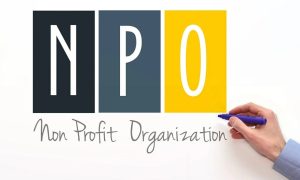You’ve poured your heart into crafting engaging lesson plans, spent countless hours creating vibrant classroom decor, and now you’re ready to share your educational treasures with the world. Teachers Pay Teachers (TPT) beckons, promising a platform to not only help fellow educators but also to potentially earn a substantial income. But how much money can you really make on TPT? This guide delves deep into the world of TPT, equipping you with the knowledge and strategies to transform your passion for education into a thriving online business.
Understanding Teachers Pay Teachers
Teachers Pay Teachers is an online marketplace where educators buy, sell, and share original educational resources. Founded by Paul Edelman in 2006, TpT has become a go-to platform for teachers seeking quality materials created by their peers. From lesson plans and task cards to digital resources and clip art, TpT offers a wide range of products that cater to various subjects and grade levels.
The TpT Community
At its core, TpT is more than just a marketplace—it’s a vibrant community of educators supporting one another. By participating in the TpT community, you can connect with fellow teachers, share ideas, and gain insights into the latest educational trends.
Factors Influencing Income on TPT
Before we dive into the specifics of maximizing your earnings, it’s crucial to understand the key factors that influence how much money you can make on TPT. Think of these as the foundational pillars upon which your TPT success will be built.
Popularity of Your Products

The demand for your educational resources significantly impacts your earning potential. To maximize sales, focus on creating products that address common challenges teachers face or fill gaps in the marketplace.
- Identify Needs: Research what teachers are searching for on TpT. Popular categories include CCSS-aligned lessons, assessment tools, classroom management resources, and technology integration materials.
- Stay Current: Develop resources that align with current events, new teaching standards, or emerging educational trends. For example, creating antiracism resources or materials that promote 21st-century skills like communication skills and critical thinking can meet rising demands.
- Niche Specialization: Specializing in a particular subject, grade level, or teaching methodology can help you stand out. Whether it’s special education, STEM, or language arts, focusing on your teaching expertise can attract a dedicated audience.
Quality of Offerings
Delivering quality products is essential for building a reputable brand on TpT. High-quality resources not only attract more buyers but also encourage repeat customers and positive reviews.
- Professional Presentation: Invest time in designing visually appealing products. Use high-quality clip art, readable fonts, and clear formatting to make your resources stand out.
- Comprehensive Content: Ensure your materials are thorough, accurate, and aligned with educational standards. Including detailed product descriptions and previews helps buyers understand the value of your resource.
User-Friendly Design: Organize your materials logically and include instructions or answer keys when appropriate
Effective Marketing Strategies
A well-crafted marketing strategy can significantly boost your visibility and sales on TPT.
- Optimize for Search: Use relevant keywords in your product titles and descriptions to improve searchability. Think about what terms teachers might use, such as “no-prep resources,” “holiday products,” or “digital task cards.”
- Leverage Social Media: Promote your TPT store on platforms like Pinterest, Instagram, and Facebook. Share engaging content, such as tips, resources, or behind-the-scenes looks at your creative process.
- Pinterest: Create eye-catching pins with Board Descriptions optimized for search terms. Pinterest is a powerful tool for driving traffic to your TPT store.
- Instagram: Use visuals to showcase your products and connect with other educators. Engaging stories and reels can increase your reach.
- Email Marketing: Build an email list to notify subscribers about new products, sales, or blog posts related to your offerings.
Participate in the TPT Community: Engage with other sellers and buyers through forums, Q&A sections, and collaborative projects. Networking can lead to valuable partnerships and increased visibility.
Seller Account Type
TPT offers two types of seller accounts: Basic Seller and Premium Seller.
- Basic Seller: Free to join, but TPT takes a larger percentage of your sales—45% commission plus a $0.30 transaction fee per resource.
- Premium Seller: For an annual subscription fee of $59.95, you can upgrade to a Premium Seller account. Premium Sellers keep 80% of each sale with no transaction fee on sales over $3.
Upgrading to a Premium Seller account is advisable if you aim to make consistent sales, as the higher commission rate can significantly increase your earnings.
The Role of SEO in Boosting Sales

In the vast digital marketplace of TPT, Search Engine Optimization (SEO) plays a pivotal role in determining the visibility of your products. Think of SEO as the compass guiding potential buyers to your resources amidst a sea of offerings.
Importance of Keywords
Keywords are the linchpin of effective SEO. They are the terms and phrases that potential buyers enter into the TPT search bar when looking for specific resources. By strategically incorporating relevant keywords into your product listings, you can increase the likelihood of your resources appearing in relevant search results.
Strategies to Drive Traffic to Your TPT Store
Driving traffic to your TPT store is essential for increasing product visibility, attracting new buyers, and ultimately, boosting your earnings. Here are some effective strategies:
Utilizing Social Media Platforms
Social media platforms like Pinterest, Instagram, and Facebook can be powerful tools for promoting your TPT store, connecting with potential buyers, and building a community around your brand.
- Pinterest: Create visually appealing pins that showcase your resources, link back to your TPT store, and use relevant keywords in your pin descriptions.
- Instagram: Share behind-the-scenes glimpses of your creative process, highlight new product releases, and engage with your followers through stories and live sessions.
- Facebook: Join relevant Facebook groups for teachers, participate in discussions, and share your TPT resources when appropriate.
Engaging with the TPT Community

Actively engaging with the TPT community is crucial for building relationships, establishing your presence, and gaining valuable insights from fellow educators.
- Participating in Forums: Join TPT forums, participate in discussions, and offer helpful advice to other sellers.
- Leaving Reviews: Leaving thoughtful reviews on other sellers’ products not only benefits the community but also increases your visibility on the platform.
- Attending Conferences: Consider attending TPT conferences and workshops to network with fellow sellers, learn from industry experts, and stay informed about platform updates.
Maximizing Your Earnings on TPT
Building a Strong Brand
Establishing a recognizable brand helps differentiate you from other sellers and fosters customer loyalty.
- Consistent Branding: Use a consistent logo, color scheme, and visual style across all your products and promotional materials.
- Tell Your Story: Share your personal experience and passion for teaching. Let buyers know what drives you and how your resources can make a difference in their classrooms.
- Customer Service: Provide excellent support by responding promptly to inquiries and addressing any issues that arise.
Developing a Product Line
Creating a cohesive line of products encourages buyers to purchase multiple items from your store.
- Complementary Resources: Design resources that work well together, such as a series of lesson plans or themed activities.
- Bundles: Offer bundles at a discounted price to provide value and encourage larger purchases.
- Seasonal and Holiday Products: Capitalize on seasonal needs by creating resources for holidays or special events.
Pricing Strategies
Finding the right price point is crucial for maximizing sales while ensuring your efforts are adequately compensated.
- Research Competitors: Look at similar products to gauge market rates.
- Value-Based Pricing: Consider the time saved and benefits provided to the buyer when setting prices.
- Promotions and Sales: Offer occasional discounts or participate in site-wide sales to attract cost-conscious buyers.
Continuous Improvement
Regularly updating and expanding your offerings keeps your store fresh and encourages repeat business.
- Add New Products: Consistently releasing new resources keeps your audience engaged and attracts new customers.
- Update Existing Products: Improve older resources based on feedback or changes in educational standards.
- Seek Feedback: Encourage buyers to leave reviews and consider their suggestions for future products.
Potential Earnings
While there are stories of TPT sellers earning significant income, it’s important to set realistic expectations.
- Top Sellers: Educators like Deanna Jump have earned over a million dollars on TpT. Such success stories highlight the platform’s potential but are not the norm.
- Average Seller: Many sellers earn a modest income that supplements their salary. Earnings can range from a few hundred to a few thousand dollars annually, depending on factors like product quality, marketing effort, and niche demand.
- Passive Income: Once your products are uploaded, they can generate passive income over time. However, ongoing effort is needed for marketing and updating resources.
Challenges and Considerations
Time Commitment
Balancing the demands of teaching with running a TPT store can be challenging.
- Managing Workload: Creating resources, marketing, and customer service require additional time outside of teaching hours.
- Work-Life Balance: Set realistic goals and boundaries to prevent burnout during tough times.
Competition
With thousands of resources available, standing out in the TPT marketplace requires strategic effort.
- Unique Offerings: Differentiate your products by focusing on your unique skills and areas of expertise.
- Quality Over Quantity: Prioritize creating high-quality resources rather than producing a large volume of mediocre ones.
Financial Considerations
Understanding the financial aspects of selling on TPT is essential.
- Commission Fees: Factor in commission rates and transaction fees when pricing your products to ensure profitability.
Expenses: Consider costs like the annual membership fee, design software, or professional development courses that can enhance your skills.
Tips for Success on TPT

- Leverage Your Teaching Expertise
Draw upon your classroom experiences to create resources that address real-world needs. - Develop Additional Skills
Enhance transferable skills such as graphic design, copywriting, and digital marketing to improve your products and promotions. - Stay Informed
Keep up with educational trends, technological advancements, and changes in curriculum standards. - Engage with the Community
Participate in professional learning communities, webinars, and workshops to learn from other successful TpT sellers.
Utilize TPT Resources
Take advantage of TPT’s seller tools, tutorials, and support services to optimize your store.
Conclusion
Embarking on your TPT journey can be both exciting and daunting. While there’s no magic formula for instant success, understanding the factors influencing earning potential, implementing effective marketing strategies, and consistently delivering high-quality resources can pave the way for a thriving TPT business. Remember, your earning potential on TPT is directly proportional to your dedication, creativity, and commitment to providing valuable resources for fellow educators. So, dive in, embrace the journey, and watch your passion for education blossom into a rewarding and fulfilling venture.
ALSO READ: How to Scale a Cleaning Business
FAQs
Neglecting Keyword Research: Failing to research relevant keywords can render your products invisible in search results.
Underestimating the Importance of Marketing: Creating great resources is only half the battle. Effective marketing is crucial for driving traffic to your store and attracting buyers.
Pricing Products Too Low or Too High: Finding the right price point can be tricky. Researching competitor pricing and considering the value your resources provide is essential.
Invest in Professional Design: Consider hiring a graphic designer to create visually appealing and professional-looking resources.
Get Feedback from Fellow Educators: Ask trusted colleagues to review your resources and provide constructive criticism.
Stay Updated on Educational Trends: Continuously research and incorporate the latest educational trends and teaching methodologies into your resources.
Create a Content Calendar: Plan your product releases in advance to ensure a consistent stream of new content while allowing time for marketing and store management.
Automate Tasks: Utilize scheduling tools for social media and email marketing to streamline your workflow.
Outsource When Necessary: Consider outsourcing tasks like graphic design or customer service if your budget allows.




